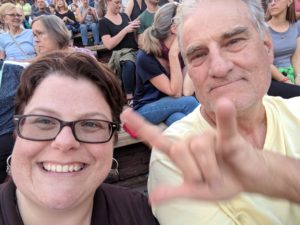 When a person with diabetes has bypass surgery following a heart attack there are a lot of instructions. Some of these instructions are about the days immediately after release from the hospital and others detail lifestyle overhauls to be implemented in the future. There are prescriptions to pick up and schedules to learn, papers to be signed and payment to be discussed. It would be a lot for a healthy person to assimilate, much less a tired, cranky, shoeless man who wants nothing more than to not be at the hospital any longer.
When a person with diabetes has bypass surgery following a heart attack there are a lot of instructions. Some of these instructions are about the days immediately after release from the hospital and others detail lifestyle overhauls to be implemented in the future. There are prescriptions to pick up and schedules to learn, papers to be signed and payment to be discussed. It would be a lot for a healthy person to assimilate, much less a tired, cranky, shoeless man who wants nothing more than to not be at the hospital any longer.
My poor aunt was on hand for my father’s release from the hospital after his heart surgery. He’d come to Denver 10 days earlier to visit me and was admitted to the hospital late the night he arrived. Clearly, his vacation was not turning out as planned.
His first stop after discharge was IHOP. The hospital had provided breakfast early that morning but the release process was so long that both he and my aunt were starving by the time he was actually wheeled out to her Buick. Before they could eat, however, they had to retrieve his shoes from my cousins’ house as nobody thought to tell his sister that he needed footwear upon his release.
Satiated and worn out after his jailbreak and breakfast adventure, Dad spent the day resting. My cousin and I spent the day trying to sort out what we had to do for him next. We went to pick up his prescriptions and gave the pharmacist horrified stares when he said, “you know how to give him the insulin injections, right?”
No. No, we did not.

We collected the astonishing amount of drugs my father now required and rushed home to investigate the various release packets that had been sent home with him that morning. Nothing in them told us how to administer injectable insulin and my father was no help at all – he had never been on injectable insulin and had no idea how much to take or when. He couldn’t remember the doctors mentioning it and my aunt had been so occupied with getting him out of the hospital and comfortable, she didn’t know anything.
The next day while I was at work, my cousin went back to the hospital to learn how to properly care for my father.
The transition between care settings is an incredibly vulnerable time for patients. My dad was lucky that he had a fleet of people willing and able to help make sure his care was consistent and that all of the provider instructions were followed. Other patients may not be so fortunate, or they may be well supported while the flow of information between providers or facilities is less than perfect.
Care transitions are an important opportunity for providers and clinicians to maintain the continuum of care and ensure that patients remain healthy and out of the hospital. Personalized handoffs between care settings allow patient treatment information to be shared quickly and accurately while medication adherence programs help patients receive the prescriptions they need to improve their health. Educating the caregivers is also a crucial step in making sure patients receive the care they need and it is important that they understand the discharge instructions and know where to seek answers should challenges arise.
CIVHC and other organizations across the state are working to improve these transitions and reduce the number of Coloradans who wind up back at the hospital or in the ER. On February 22, four of these organizations will present care transition programs at CIVHC Connect: Caring and Preparing for Serious Illness; click here to view agenda and register for this day-long event.
